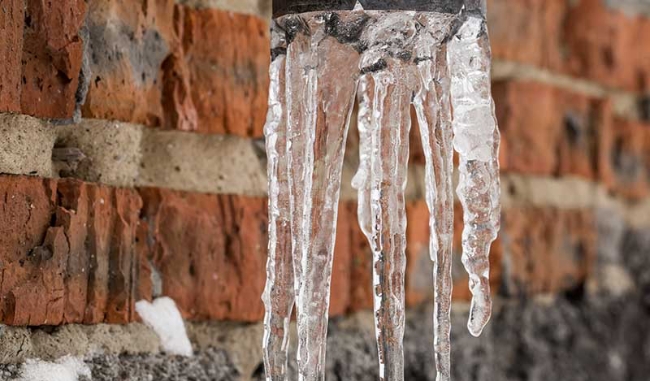Important Advice to Prevent Frozen Pipes in Winter
Important Advice to Prevent Frozen Pipes in Winter
Blog Article
The article on the next paragraphs about 6 Ways to Prevent Frozen Pipes is fairly captivating. Read it for yourself and figure out what you think about it.

Winter can damage your plumbing, specifically by freezing pipelines. Here's exactly how to stop it from happening and what to do if it does.
Introduction
As temperatures decline, the danger of icy pipelines increases, possibly bring about expensive repairs and water damages. Understanding how to stop frozen pipes is essential for homeowners in cool climates.
Comprehending Icy Pipes
What triggers pipelines to freeze?
Pipes ice up when exposed to temperatures below 32 ° F (0 ° C) for prolonged periods. As water inside the pipes freezes, it increases, taxing the pipe wall surfaces and potentially causing them to rupture.
Risks and damages
Icy pipes can bring about water interruptions, building damage, and expensive repair work. Ruptured pipelines can flooding homes and trigger considerable architectural damages.
Signs of Frozen Piping
Identifying frozen pipes early can avoid them from breaking.
Just how to identify frozen pipes
Look for decreased water flow from faucets, unusual odors or sounds from pipelines, and noticeable frost on revealed pipelines.
Prevention Tips
Insulating prone pipelines
Cover pipes in insulation sleeves or use warmth tape to shield them from freezing temperatures. Focus on pipelines in unheated or outside areas of the home.
Home heating techniques
Keep indoor areas sufficiently warmed, especially locations with pipes. Open cupboard doors to permit warm air to circulate around pipelines under sinks.
Shielding Exterior Plumbing
Yard pipes and outdoor taps
Detach and drain pipes garden hose pipes prior to winter months. Set up frost-proof spigots or cover outdoor taps with shielded caps.
What to Do If Your Pipes Freeze
Immediate actions to take
If you presume frozen pipes, keep faucets open up to ease stress as the ice thaws. Make use of a hairdryer or towels taken in hot water to thaw pipes slowly.
Long-Term Solutions
Architectural adjustments
Consider rerouting pipes far from exterior walls or unheated areas. Add additional insulation to attic rooms, cellars, and crawl spaces.
Updating insulation
Purchase premium insulation for pipelines, attic rooms, and wall surfaces. Proper insulation helps maintain regular temperature levels and minimizes the threat of icy pipes.
Verdict
Protecting against icy pipes requires proactive procedures and quick reactions. By comprehending the causes, signs, and safety nets, home owners can secure their plumbing during winter.
6 Proven Ways to Prevent Frozen Pipes and Protect Your Home
Disconnect and Drain Garden Hoses
Before winter arrives, start by disconnecting your garden hoses and draining any remaining water. Close the shut-off valves that supply outdoor hose bibs and leave the outdoor faucet open to allow any residual water to drain. For extra protection, consider using faucet covers throughout the colder months. It’s also important to drain water from any sprinkler supply lines following the manufacturer’s directions.
Insulate Exposed Pipes
Insulating your pipes is an effective way to prevent freezing. Pipe insulation is readily available at home improvement stores and is relatively inexpensive. Pay close attention to pipes in unheated areas such as the attic, basement, crawl spaces, or garage. Apply foam insulation generously to create a buffer against the cold. You can also wrap your pipes in heat tape or thermostat-controlled heat cables for added warmth.
Seal Air Leaks
Inspect your home for any cracks or openings that could let in cold air. Seal any holes around the piping in interior or exterior walls, as well as the sill plates where your home rests on its foundation. Additionally, make sure to keep your garage door closed unless you’re entering or exiting. Leaving it open creates a significant air leak that can lead to frozen pipes.
Allow Warm Air Circulation
During cold snaps, it’s essential to allow warm air to circulate evenly throughout your home. Leave interior doors ajar to promote better airflow. Open kitchen and bathroom cabinets to help distribute heat consistently around the rooms. If you have small children or pets, be sure to remove any household chemicals or potentially harmful cleaners from open cabinets for safety.
Let Faucets Drip
A small trickle of water can make a big difference in preventing ice formation inside your pipes. When temperatures drop significantly, start a drip of water from all faucets served by exposed pipes. This continuous flow helps prevent the water from freezing. Additionally, running a few faucets slightly can relieve pressure inside the pipes, reducing the chances of a rupture if the water inside does freeze.
https://choateshvac.com/6-proven-ways-to-prevent-frozen-pipes-and-protect-your-home/

We had been shown that write-up on Prevent Frozen Pipes from a buddy on our other site. Enjoyed reading our blog? Please share it. Help somebody else find it. Thank-you for going through it.
Booking Report this page